Frisco, TX Pollen and Allergy Report for Summer 2023
Pollen Allergy Trends in Frisco, TX
When is pollen lowest in Frisco, TX?

February
Lowest month total PPM
Avg. PPM
When is pollen highest in Frisco, TX?

March
Highest month total PPM
Avg. PPM
How does pollen in Frisco, TX compare to Texas?
Frisco has a higher average PPM than the state of Texas.
Frisco yearly avg PPM:
Texas yearly avg PPM:
How does pollen in Frisco, TX compare to the USA?
Frisco has a higher average PPM than the USA.
Frisco yearly avg PPM:
USA yearly avg PPM:
Is pollen worse this year in Frisco, TX?
Spring 2023 was worse than spring 2022.
Spring 2023 PPM:
Spring 2022 PPM:
Average PPM in Frisco, TX
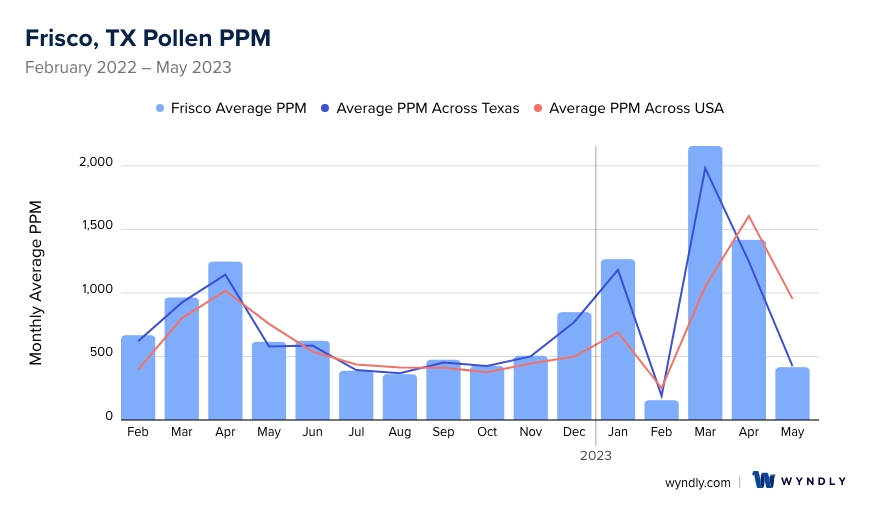
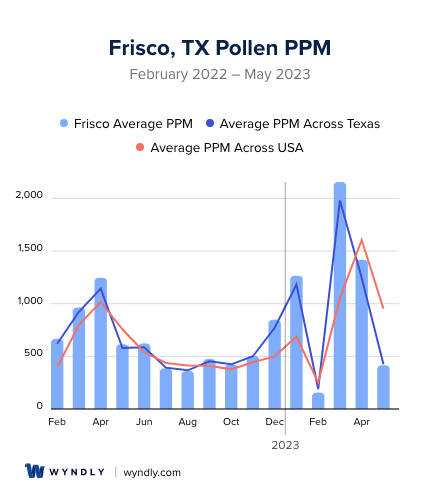
Frisco, TX Pollen and Allergy Breakdown by Month
Grass
When is grass pollen highest in Frisco, TX?
February has the highest grass pollen in Frisco, TX with an average PPM of
When is grass pollen lowest in Frisco, TX?
December has the lowest grass pollen in Frisco, TX with an average PPM of
Tree
When is tree pollen highest in Frisco, TX?
March has the highest tree pollen in Frisco, TX with an average PPM of
When is tree pollen lowest in Frisco, TX?
July has the lowest tree pollen in Frisco, TX with an average PPM of
Weed
When is weed pollen highest in Frisco, TX?
December has the highest weed pollen in Frisco, TX with an average PPM of
When is weed pollen lowest in Frisco, TX?
February has the lowest weed pollen in Frisco, TX with an average PPM of
Frisco, TX Pollen Monthly Breakdown by Pollen Type
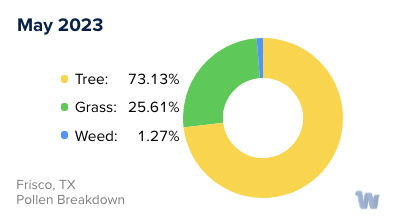
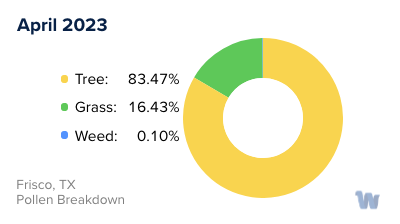
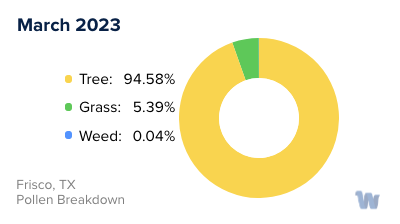


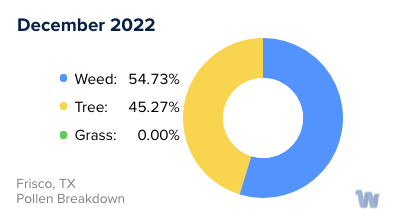

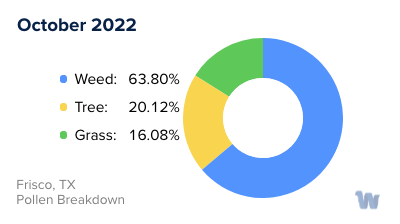
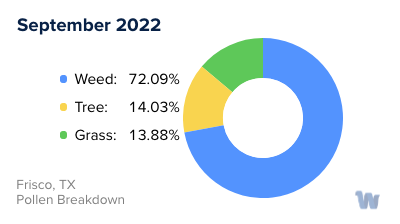
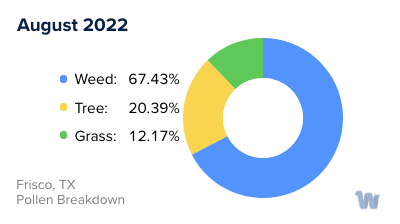


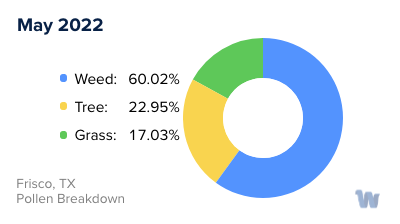
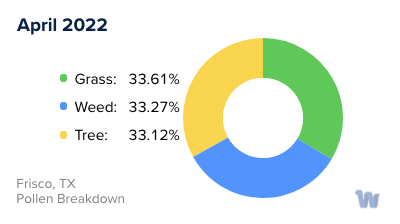
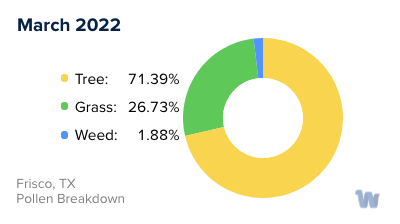
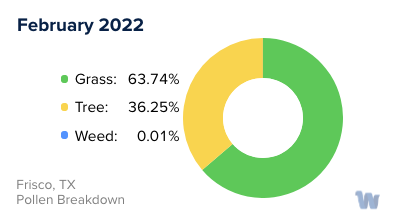
Pollen and Hay Fever in Frisco, TX
Pollen allergies and hay fever are significant health considerations for residents of Frisco, Texas, where allergens vary by season. Texas' climate allows for year-round plant growth and, as a result, constant pollen production. The types of pollen and the corresponding seasons can significantly impact those with allergies.
From November to February, Mountain Cedar pollen is prevalent. This allergen is difficult to avoid due to its small, lightweight pollen that can travel hundreds of miles. Symptoms may include itchy, watery eyes, a runny or stuffy nose, and sneezing.
As the Mountain Cedar season wraps up, from January to May, Frisco's residents encounter new allergens: Elm, Ash, and Mulberry. The pollen from these trees can lead to symptoms such as sneezing, wheezing, and asthma-like symptoms.
Springtime, from March to May, adds Oak and Pecan tree pollen, as well as pollen from grasses like Bermuda, Johnson, and Kentucky bluegrass. With grasses being so plentiful, this can be an especially irritating time of year for anyone sensitive to grass, with symptoms extending to include a sore throat and more asthma-like symptoms.
Come the months of June and July, there is a brief respite. The most common sources of allergies stop producing pollen during these months, and pollen counts drop.
However, the respite doesn't last long. In August, a new and notorious allergy culprit, Ragweed, appears and lasts until November. This soft-stemmed, flowering weed is populous in the tropical and subtropical regions of the Americas and is particularly plentiful in the southwestern U.S. Symptoms during this season include runny noses, sneezing, itchy eyes, and, at its worst, asthma flares.
As the ragweed season tapers off in November, it's time for the Mountain Cedar to bloom again, and the cycle of allergen seasons in Frisco, Texas, starts anew. This rotating calendar of allergens requires residents to stay vigilant and aware of the changing seasons and corresponding pollen types, even though this article does not discuss treatments or remedies for these allergies.

